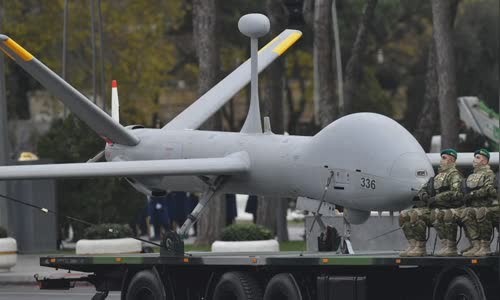Unmanned aircraft (UAVs) become the main weapon in a series of military campaigns in 2020, from assassinations to armed conflicts.
When the war broke out in the Nagorno-Karabakh conflict zone in September, many thought that the Armenian army with a strong infantry force, equipped with many tanks, armored, artillery and commanding officers.

UAVs produced by Israel during a parade in the Azerbaijan capital Baku on December 10 Photo: Livejournal
However, the appearance of the UAV has upset the battlefield.
Then, armed UAVs made by Turkey and Israel were thrown into the battlefield, delivering precise strikes on high-value Armenian weapons, such as air defense complexes, tanks, and squadrons.
This is a modal window.
Beginning of dialog window.
End of dialog window.
Having suffered heavy losses from these attacks, the Armenian army in the front lines was almost isolated from the rear, helpless as the Azerbaijani infantry gradually took up strategic positions.
After two weeks of fighting, Armenia agreed to sign a "bitter agreement", withdrawing most of its forces from Nagorno-Karabakh, where their mighty army was powerless against the enemy's unmanned aerial vehicles.
Military experts believe that this is the clearest proof that the UAV has gradually become the main weapon to play an important role in military campaigns.
UAVs have become the dominant weapon in the Libyan battlefield, where Turkey deploy the Bayraktar TB2 squadron to support the Libyan National Government (GNA) faction recognized by the United Nations.
The Libyan National Army (LNA) rebel also has strong support from the Chinese-made Wing Loong II aircraft in the service of the Arab Emirates and the United Arab Emirates (UAE).
"The conflicts in which high-tech UAVs determine the battlefield are becoming more and more common. Equally worrying is that UAVs are constantly being used in assassination campaigns for self-defense reasons, typically.
Experts say that the year 2020 will see the world enter the second UAV era, in which the UAV powers can deploy their power far from the territory without fear of loss of life.
The Missile Technology Control Treaty (MTCR) was introduced in the 1980s to prevent the proliferation of unmanned weapons systems with the potential of mass destruction, but still did not prevent UAVs from becoming weapons.
As of March this year, at least 102 countries around the world have military UAVs, of which about 40 have owned or are looking to buy armed drones (UCAVs).
Experts say UAVs are playing an increasingly large role in modern conflicts.
Not only detecting and monitoring the enemy, many armed UAVs can immediately launch air strikes on the target with a much higher success rate than the air strike of a manned fighter.
One of the bloody lessons that military experts learned from the Armenian-Azerbaijani war was the great power of the UAVs to cut off enemy supply lines and to scout the battlefield, facilitate encirclement and destruction.
The rapid development of UAV technology makes many traditional defense systems not catch up, leading to a constantly increasing advantage for countries with armed UAVs.
"It is clear that the modern battlefield space is slowly changing because of the emergence of invisible assassins like armed drones and suicide UAVs. They are very cost effective, operators are not.



 Skyler Overton
Skyler Overton







